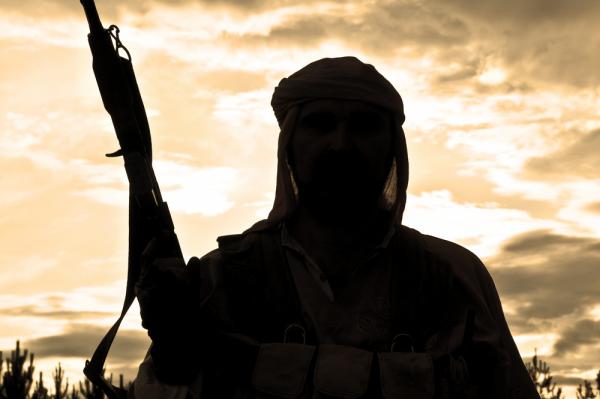
WASHINGTON, Nov. 19 (UPI) ─ Boko Haram killed 7,512 people in 2014 ─ a 300 percent increase from the previous year ─ making it “the most deadly terrorist group in the world,” according to the 2015 Global Terrorism Index by the Institute for Economics and Peace.
The Islamic State received more media attention and ignited political rhetoric worldwide, but it killed fewer people last year than the Nigeria-based group V─ 6,073. Meanwhile, Nigeria’s Fulani militants killed 1,129, far more than the 63 deaths they enacted the year prior.
Boko Haram was designated as a foreign terrorist organization by the U.S. State Department in 2013. The Islamic State ─ then known as al-Qaida in Iraq ─ received the designation in 2004.
The groups’ death tolls were classified separately in the report, but the lines are a little blurred.
Boko Haram, which seeks to establish an Islamic state in Nigeria and has ruthlessly targeted civilians, pledged allegiance to the Islamic State in March, becoming the Islamic State’s West Africa Province.
According to the index, there was an 80 percent increase in global militant attacks in 2014 compared to the previous year ─ the largest yearly increase in 15 years. In 2000, there were 3,329 deaths attributed to militancy, whereas in 2014 there were a total 32,658 deaths ─ a nine-fold increase.
The majority of attacks have been concentrated in five countries. Some 78 percent of deaths due to terrorism in 2014 took place in Afghanistan, Iraq, Nigeria, Pakistan and Syria.
Although deaths are highly concentrated in those countries, there was a 120 percent increase in the number of countries hosting more than 500 terrorism-related deaths last year ─ Cameroon, Central African Republic, Somalia, South Sudan, Yemen and Ukraine joined the list.
“While the majority of countries in the world did not have a death from terrorism, the total number of countries which experienced at least one death increased by eight, raising the total to 67 countries in 2014,” the report states, which includes the Western countries of Austria, Australia, Belgium, Canada and France.
In 2014, there was an 11 percent decrease in the deaths of religious figures and worshipers, offset by a 172 percent increase in the deaths of civilians.
Although the Islamic State has called for attacks in Western countries, including the United States, Canada, Australia and Europe, less than 1 percent of deaths occurred in those countries in the last 15 years, excluding the Sept. 11, 2001 attacks in the United States.
“Lone wolf” attacks account for 70 percent of all deaths in the Western world since 2006, but Islamic extremism is not to blame.
“Islamic fundamentalism was not the primary driver of lone wolf attacks, with 80 percent of deaths in the West from lone wolf attacks being attributed to a mixture of right wing extremists, nationalists, anti-government elements, other types of political extremism and supremacism,” the report says.
About 30,000 people have traveled to Iraq and Syria from around 100 different countries to join militant Islamist groups ─ about 21 percent of whom came from Europe and 50 percent from the Middle East and North Africa.
Syria has been blighted by a complex civil war in which the Islamic State, the Syrian government and multiple Syrian rebel groups fight for control of territory, causing a mass exodus of migrants seeking refuge elsewhere.
About 4 million people have fled Syria and about 7 million have been internally displaced since the conflict began in 2011. Many Syrians have fled to Europe, creating a migratory crisis as more than 1 million refugees are expected to arrive to Europe from Syria and other conflict-stricken countries.
“State-based conflicts, coupled with high levels of terrorism, have been the major cause of the massive flow of refugees and displaced people,” according to the study. “Ten of the 11 countries with more than 500 deaths from terrorism also had the highest levels of refugees and Internally Displaced People migration in the world.”
There are two factors closely associated with militancy: political violence committed by the state and the existence of a broader armed conflict, according to the report, which since 2000 has tracked conflict in 162 countries.
“The research finds that 92 percent of all terrorist attacks over the past 25 years occurred in countries where state-sponsored political violence was widespread, while 88 percent of attacks occurred in countries that were involved in violent conflicts,” the study reports.
Less than 1 percent of all terrorist attacks worldwide occurred in countries without any ongoing armed or political conflict.
In wealthier nations, members of the Organization for Economic Co-operation and Development, the most significant factors correlating with militancy are youth unemployment, press confidence, belief in democracy, drug crime and attitudes on immigration, which “highlights many of the underlying drivers of radicalization and lone wolf terrorism,” according to the study.
In poorer, non-OECD countries, the factors most strongly correlated with militancy include a history of armed conflict, ongoing conflict within the country, corruption and a weak business environment.
But while a rise in deaths from global militancy is alarming, the numbers pale in comparison to annual murders worldwide.
“Although the findings presented in this report paint a disturbing picture, it is important to put it in context with other forms of violence,” the Institute for Economics and Peace adds. “At least 437,000 people are murdered each year, which is over 13 times more than the number of victims of terrorism.”






